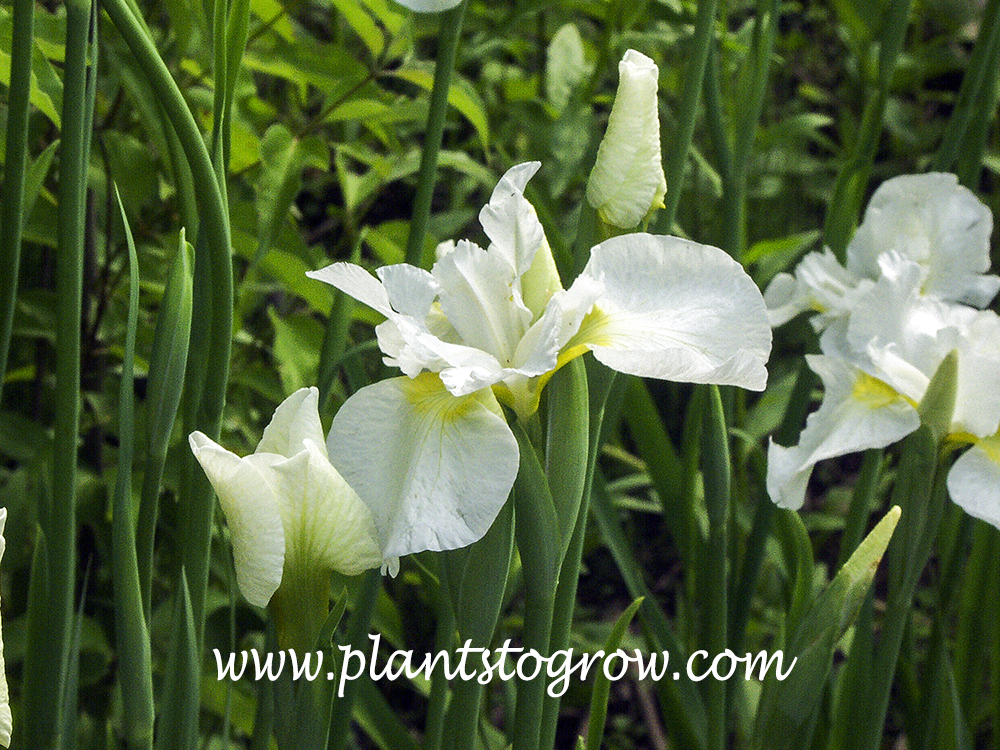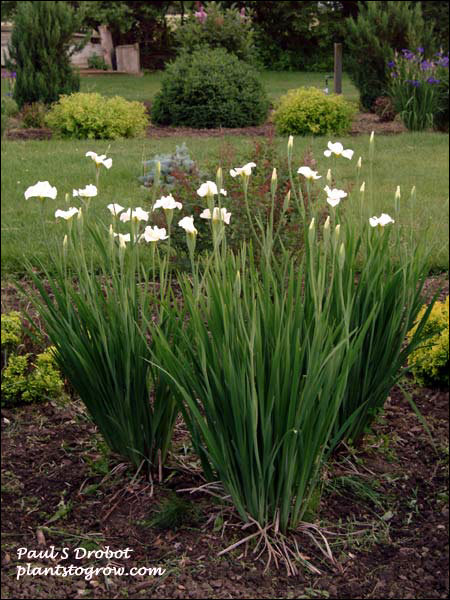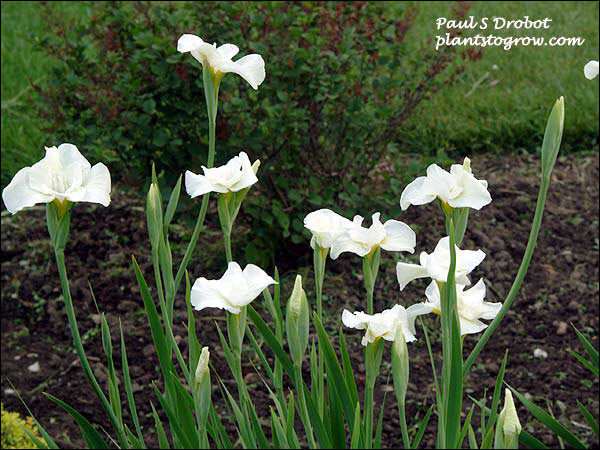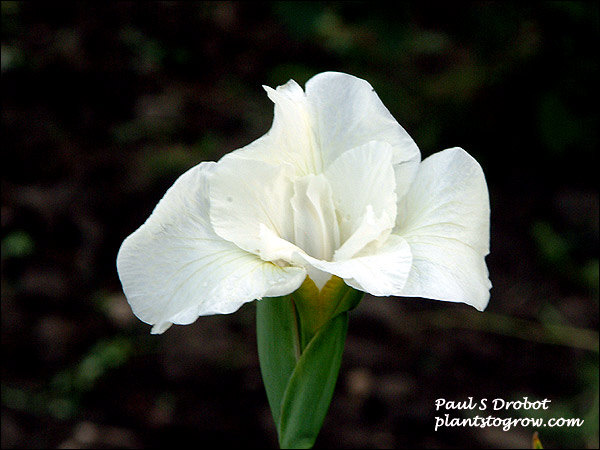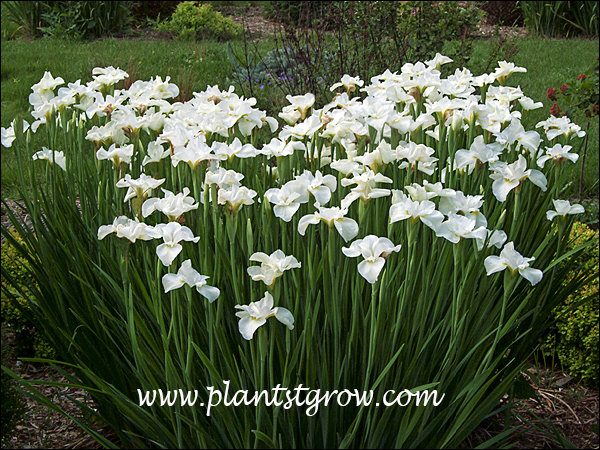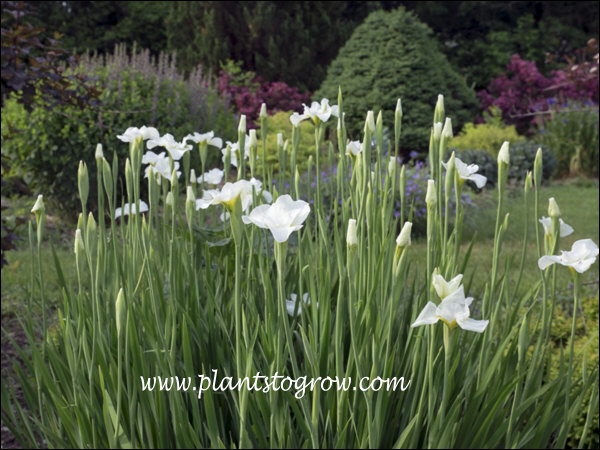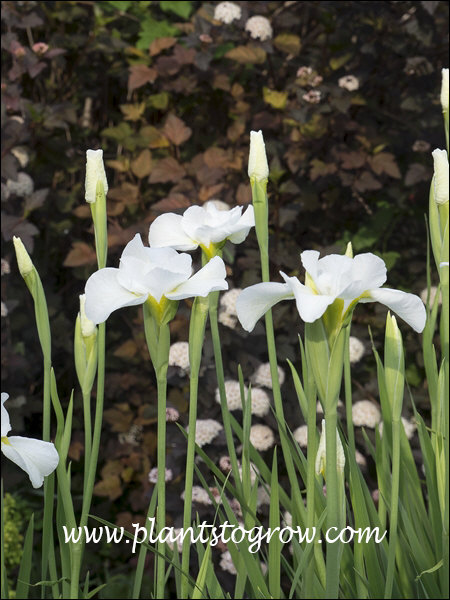| Description | Siberian Iris Gulls Wings is one of the finest white flowering Siberian Iris available. A great landscape perennial. |
|---|---|
| Pronunciation | (EYE-ris)(sy-BEER-ah-kuh) |
| Plant Type | Perennials Hardy, Bulbs, corms, tubers, rhizoms, etc., Site author's observations |
| Hardiness Zone | (3)4-9 |
| Sunlight | prefers full, tolerates some shade |
| Moisture | prefers moist to average but somewhat drought tolerant |
| Soil & Site | average |
| Flowers | large gleaming white flowers with wide flaring falls on erect stems that rise high above the foliage |
| Fruit | seed pod |
| Leaves | linear cattail-like leaves, foliage holds up after blooming, can get a nice yellow fall color. |
| Dimensions | 30-36 inches, space 18-24 inches on center |
| Maintenance | Divide the plants in August to September into clumps with at least 3-5 eyes. Fan back the foliage 50% or more. Older plants become more difficult to divide because of the deep fibrous root system and as they age the plant forms a solid mass of white roots. I was talking to a gal that runs a small perennials nursery and she uses a small reciprocating saw for dividing old clumps. |
| Propagation | division, old clumps become very woody and are harder to divide |
| Cultivar Origin | William McGarvey, Borboleta Gardens, 1989 |
| Author's Notes | I have grown this Siberian Iris for many years and it always is a top performer in my yard and the gardens I install. The clumps in my yard became shaded from an overgrown Arborvitae Sherwood Moss. After a ice storm destroyed this plant, the Iris got more sun and bloom increase significantly. Can be grown as a specimen or stand alone perennial |
| Notes & Reference | The American Iris Society, (wiki.irises.org) |

Cart
